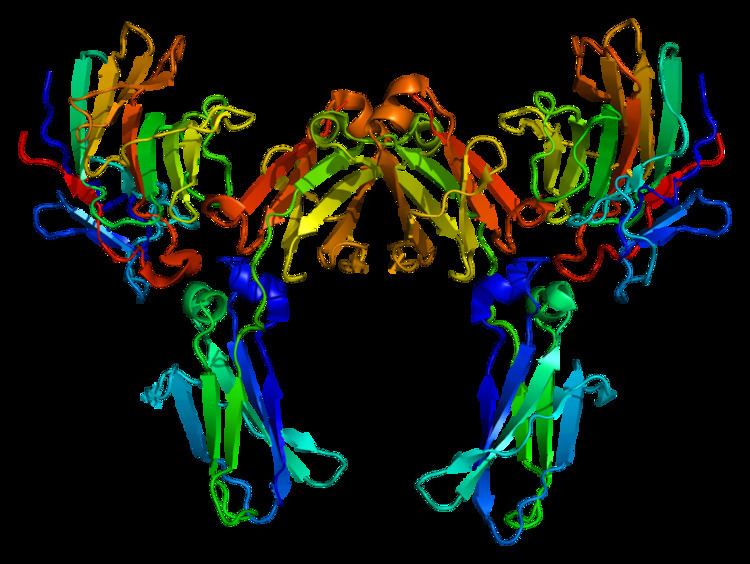 | ||
Intracellular antibody-mediated degradation (IAMD) is a neutralization mechanism of intracellular antibody-mediated immunity whereby an effector protein, TRIM21, directs antibody bound virions to the proteasome where they are degraded. As yet, it has only been observed to act against the adenovirus but is likely to also be effective against other non-enveloped viruses.
Contents
Mechanism of action
In IAMD, the neutralization of the pathogen follows a non-cytotoxic mechanism. That is, the infected cell is not attacked as in Antibody-dependent cell-mediated cytotoxicity, instead the virions are rapidly destroyed and the cell may be relieved of infection.
- Immunoglobulin G (IgG) binds specifically to the target antigen presented on the pathogen extracellularly
- The antibody bound pathogen infects a host cell
- In the cytosol, TRIM21 (a protein of the Tripartite motif family) binds with high affinity to IgG
- TRIM21 is conjugated with ubiquitin, which directs the complex to the proteasome
- Degradation by proteolysis of both the protein capsid and the antibody occurs, but not the TRIM21 protein
Resistance to mutants
There are a number of reasons why IAMD is so resistant to evasion by mutants through evolution:
References
Intracellular antibody-mediated degradation Wikipedia(Text) CC BY-SA
